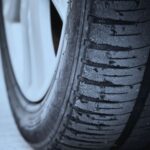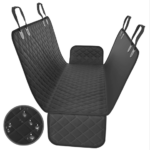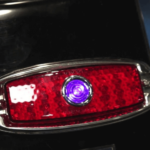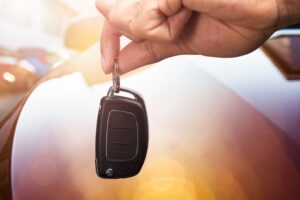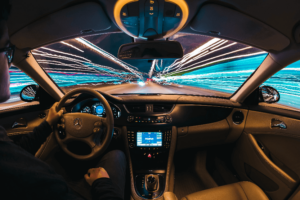Try to be observant when a police officer pulls you over. More often than not, you will notice that they will touch the end of your car. Why do police touch your car when they pull you over? This article will give you some answers to that question.
Police touch a car when they pull it over for two main reasons: To ensure that nobody can jump out of the trunk to attack them and leave their fingerprints in your car as proof of their interaction with the driver.
If the cops suspect that the vehicle they have stopped is dangerous, they may touch its backend to ensure that the trunk is closed. This may appear strange, but the police use this strategy to ensure no one is hiding inside the trunk who could suddenly pop out and hurt them.
When police officers order a traffic stop, they need to follow certain safety procedures. This is not just for their safety but also for the safety of the violators. They are touching the rear end of the car that they have ordered to stop is one way of proving that they were in the presence of that particular car.
Read on to learn more about why the police touch the back of your car or your taillight when they ask you to pull over.
Why Do Police Touch Your Car When They Pull You Over?
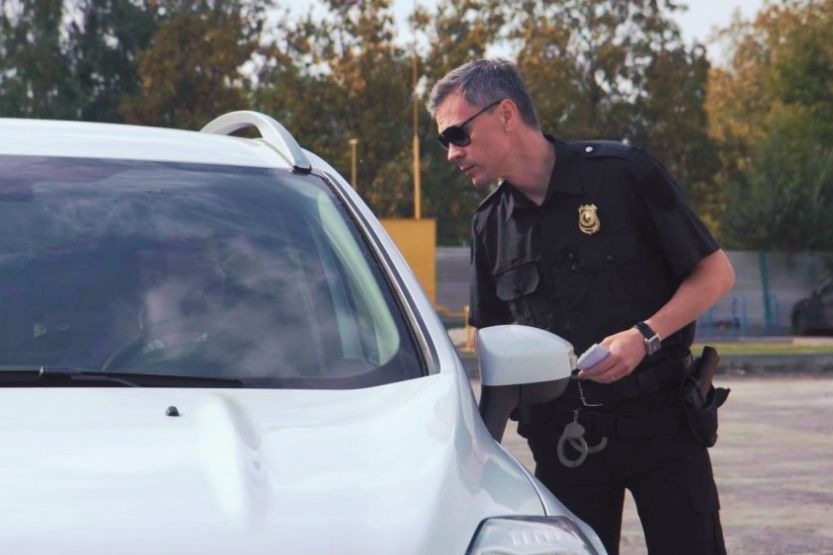
It’s disturbing and frightening to see red and blue lights flashing behind you. Those flashing lights are from police cars ordering you to pull over. Once you stop, you will likely see the cops touching your taillights.
Why Do Police Touch Your Taillight?
They do this if they believe that they are facing a dangerous situation. The cops will touch the rear end of your car on their way to your window. This is their way of ensuring that your trunk is closed and that no one could suddenly pop out and hurt them.
Police Officers Follow Procedures to Ensure Their Safety
When police officers order a traffic stop, they need to follow certain procedures to ensure their safety and the safety of the violators. Touching the vehicle is also a way to prove that they are really with that particular vehicle. This also leaves their fingerprints on that vehicle.
It will appear strange to those who are not familiar with this practice. But it is a standard and a common practice of law enforcement officers.
While approaching the driver’s window, they will touch the taillight or the trunk. If you are not a criminal running away from the crime scene, there’s no reason to be afraid.
Prevalent Before the Invention and Deployment of Dashboard Cams and Personal Cameras
This practice was prevalent before the invention and deployment in police circles of dashboard cams and personal cameras. Awful things can happen after the police order a driver to stop.
Traceable Fingerprints
The interaction with the driver can be traced back to the officer’s fingerprints they left on the vehicle. This will help in case additional crimes are committed after the incident.
Startle the Driver
Touching the vehicle may also have started because of the penchant of police officers to spook drivers as they approached their windows.
The driver pulled over may have weapons or illegal drugs that they may scramble to hide. Hearing a surprise knock on the taillight may startle the driver and increase their chances of getting caught.
Is There Any Reason Why They Do That?
Based on the admissions of law enforcement officers, there are many reasons why they touch the rear end of the vehicles that they order to pull over.
Here are some of those reasons:
1. To Ensure the Trunk Is Closed
The most common reason police officers touch the taillight or rear end of a vehicle that they pull over is to make sure that the trunk is closed. This practice will seem strange to people unfamiliar with the dangers law enforcement officers face every day, but not to police officers.
They want to ensure that they will be safe and secure every time they flag down a suspected vehicle. So they knock on the trunk or the vehicle’s taillight; they stop to make sure that no one hiding under it will pop out and hurt them.
2. Leave Fingerprints on the Vehicle
Not too many motorists know this. Police officers touch the cars they pull over to leave their fingerprints on those vehicles. They do this to prove that they were with the vehicle. If the driver escapes the scene, the officer’s fingerprint will prove their interaction.
Or, in case something happens to the police officer, it will tie both the officer and the vehicle together. So, those police officers need to be prepared for these things. Things can happen when police officers conduct traffic stops. And this thing happens thousands of times during a typical day.
Police officers were trained in the police academy to touch the bumper, trunk, taillight, and other external parts of the vehicle they stop on the road for various reasons. Leaving their fingerprints on the vehicle is one of the primary reasons.
Their fingerprints establish their physical connection to the vehicle. Police officers do this in case a critical incident like a traffic crash, shooting, and so forth takes place while the officer is in contact with the vehicle, which causes injury or death.
The cops are instructed to put their hands on the vehicle’s side near its rear. This gives the officer a way out if the driver decides to back out of their vehicle. The officer can be run over as a result. So, they are instructed to approach the vehicle on its side and not on its rear.
There are cases where police officers were hurt because the vehicle driver accidentally backed up and ran over the poor cops. So, the cops learned that the best way to approach stopped vehicles is from the side, not from the rear.
3. Startle the Driver
Police officers do not conduct traffic stops without any reason. They do such things because they notice that there is something amiss. So, they know they are facing a potentially dangerous situation.
Perhaps, the vehicle driver is running away from a crime scene. Or maybe the driver is carrying or transporting illegal goods like prohibited drugs or guns and ammunition. The driver may try to hide it as the police approach their vehicle.
So, the law enforcers knock on the vehicle’s rear end to startle the driver. This action may frighten the driver. So, it will disrupt their efforts to conceal their illegal goods and lead to them being caught by the cops.
4. Induce the Driver to React
Cops are trained so that they can accurately read body language. So, they will touch the rear end of your car to see how you will react. This gives them the ability to assess the situation rightly. If you are guilty of a crime, you will be stressed out, and the cops will see it.
5. To Jar an Intoxicated Driver
A theory says the sudden knock on the vehicle will jar the intoxicated driver. So, the police officer who stops the car may do this if they suspect that the driver is drunk.
However, this theory is unfounded, says Joe Hoelscher, a DWI/DUI lawyer, and criminal defense attorney. He reasoned out why you should not let cops touch your tail lights.
On the contrary, police officers should only touch the vehicle slightly, so the driver won’t realize that cop’s fingerprints are already imprinted on the vehicle. Otherwise, the offending driver could wipe off the fingerprint.
Again, why do police touch your car when they pull you over? Officers touch your car when they pull you over to ensure that they are safe from a surprise attack. Also, they do this to leave their fingerprints in your car as proof of their interaction with the driver.
Standing Police Procedure When an Officer Flags Down a Vehicle
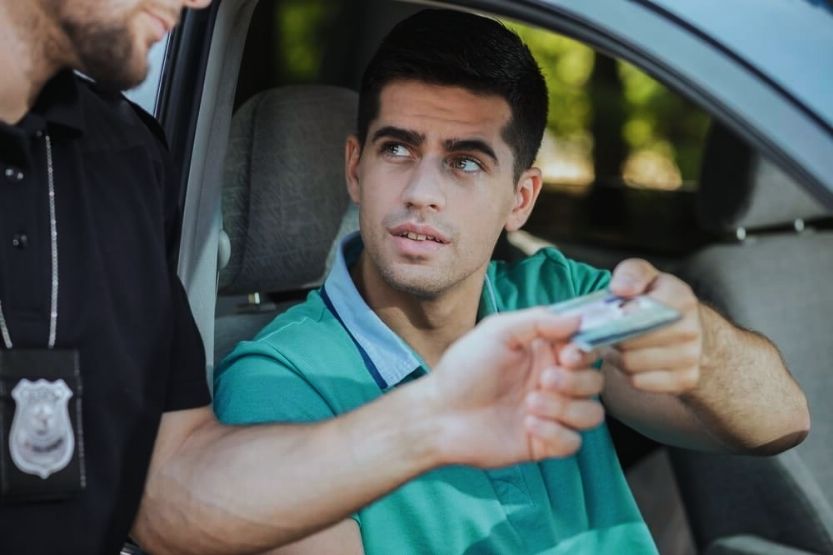
So that you can have a better understanding of what usually happens when a police officer flags down a vehicle, here is the typical procedure that law enforcement officers follow in the conduct of this particular police matter:
Touch the Vehicle’s Back
Before a police officer speaks to the driver, they would touch the back of the vehicle they ask to stop. They do this to leave their fingerprint on the vehicle. If something wrong happens to the law enforcer, the car owner or the driver will be suspected and questioned.
Many suspected drivers have said that they haven’t seen the police officer who stopped them and was hurt. But the fingerprint of the officer on the vehicle proves that the officer was in contact with the car, proving that the driver is lying.
Ask the Driver for a Driver’s License and Vehicle Registration
The police officer will then ask for the driver’s license and vehicle registration. This is always done for routine traffic stops.
If you do not yet know it, touching the vehicle is a routine practice of law enforcers in the United States and probably worldwide.
This practice can help protect and safeguard the lives of not only the police officers but also the drivers of the vehicles that they stop.
Why Touching the Car’s Back Is Not Encouraged
Distraction for Police Officers
There are certain risks involved in this practice. And some people believe that these risks far outweigh the benefits. Touching the back end of the vehicle poses a distraction for police officers. It will also give away their position, which exposes them to higher risks.
Not as Necessary as Before
Thankfully, with the use of dashcams in squad cars, the dangers to police officers have been minimized considerably. Fingerprints are not as necessary as before in documenting every incident.
Discouraged in Police Agencies
That is why this practice is now being discouraged in police agencies. However, this practice will persist in some. So, don’t be surprised if a police officer that stops you taps his fingers on the backend of your vehicle. They’re not suspecting you. The habit is just hard to break.
Why Is It Unnecessary for Police Officers to Touch Your Car
Dashcams and Body Cameras Ensure Their Safety While on Duty
With the invention and deployment of dashcams and body cameras, touching a vehicle to leave your fingerprints is no longer necessary.
Police officers are now issued various technological tools to ensure their safety.
Record All the Traffic Stops They Conduct on Their Rounds
Every car on a police squad is equipped with a dashcam. It can record all the traffic stops they conduct in their rounds. Police officers are also now wearing body cams that record everything they do while on their daily patrol.
These dashcams and body cams are more effective in proving their presence with the car and driver in question. They even record videos of every incident, with every detail of each incident seen.
Pursuing the Law Offenders Is Easier
No more will erring drivers be able to persuade the courts that they are innocent. They won’t be able to lie that they don’t know the police officer that stopped them. With clear videos of the incident, pursuing the law offenders has become easier.
However, you may still see some law enforcers touching the vehicles they stop on the road. It’s no longer part of the procedure, but it’s just a bad habit that is very difficult to break.
What Is the Safest Speed to Drive?
Frequently Asked Questions
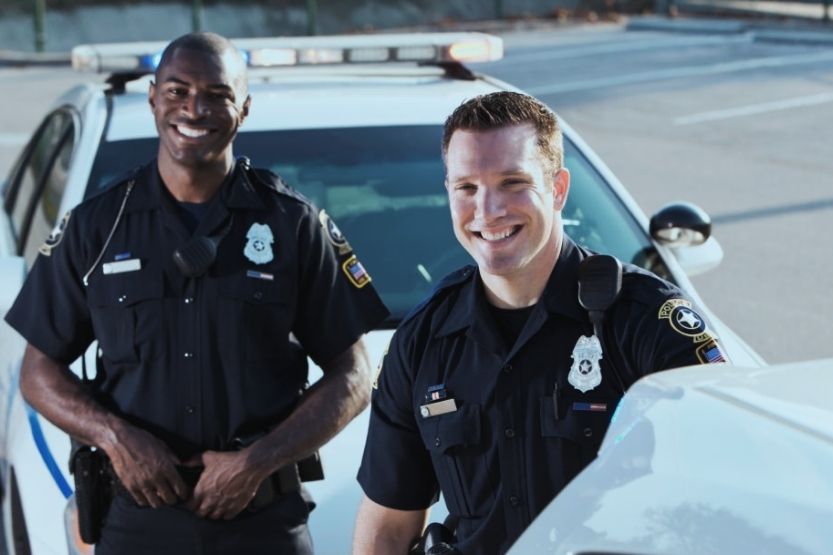
Here are some touching questions about our subject and their respective answers to enlighten you more about this topic:
Why Do Cops Touch My Car When They Stop Me?
They do it for a variety of reasons. They want to leave their fingerprints on your vehicle, so you won’t be able to say that you have not seen them yet.
Cops also touch your vehicle to startle you and make you more pliant. But one important reason why they do it is to make sure that nobody is hiding in your trunk to jump on them suddenly.
Are Cops Allowed to Touch Your Car?
If the cops do their rounds, touching your car is well within their rights. This is part of their standard procedure. While that is true, they still can’t search your vehicle without your consent and probable cause. Note that touching your car and conducting a search are not the same.
Do Body Cams Make Car Touching Obsolete?
Yes, they do. Body cams and dash cams are now being used because they are more effective in gathering evidence than leaving fingerprints on your car. However, this touching practice persists because, in some police officers, the habit is just tough to break.
Why Do Police Officers Sneak Up Along the Car’s Side?
For safety reasons, cops approach you from the car’s side instead of from the rear or the front. Some cops were hurt because the drivers suddenly backed up their cars. Cops learned their lesson, so they approach you alongside your car.
Conclusion: Why Do Cops Touch Your Car?
Cops will touch the back of a car when they pull it over for two main reasons: To ensure that nobody can jump out of the trunk to attack them and leave their fingerprints in your car as proof of their interaction with the driver.
If the police officers suspect that your car is dangerous, they may touch the backend of your car when they pull you over to ensure that your trunk is closed.
This practice may seem strange to you, but they do this to ensure that no one is hiding in your trunk, which could suddenly pop out and hurt them.
When they order you to stop, they need to follow certain procedures. They do this not only for their safety but also for your safety. Touching the rear end of your car leaves their fingerprints on it—one way of proving that they were present when you were ordered to stop your car.
Read next:

![Car Won’t Turn Over but Has Power [Causes and How to Fix] car wont turn over but has power](https://roadsumo.com/wp-content/uploads/2022/04/car-wont-turn-over-but-has-power-150x150.jpg)

